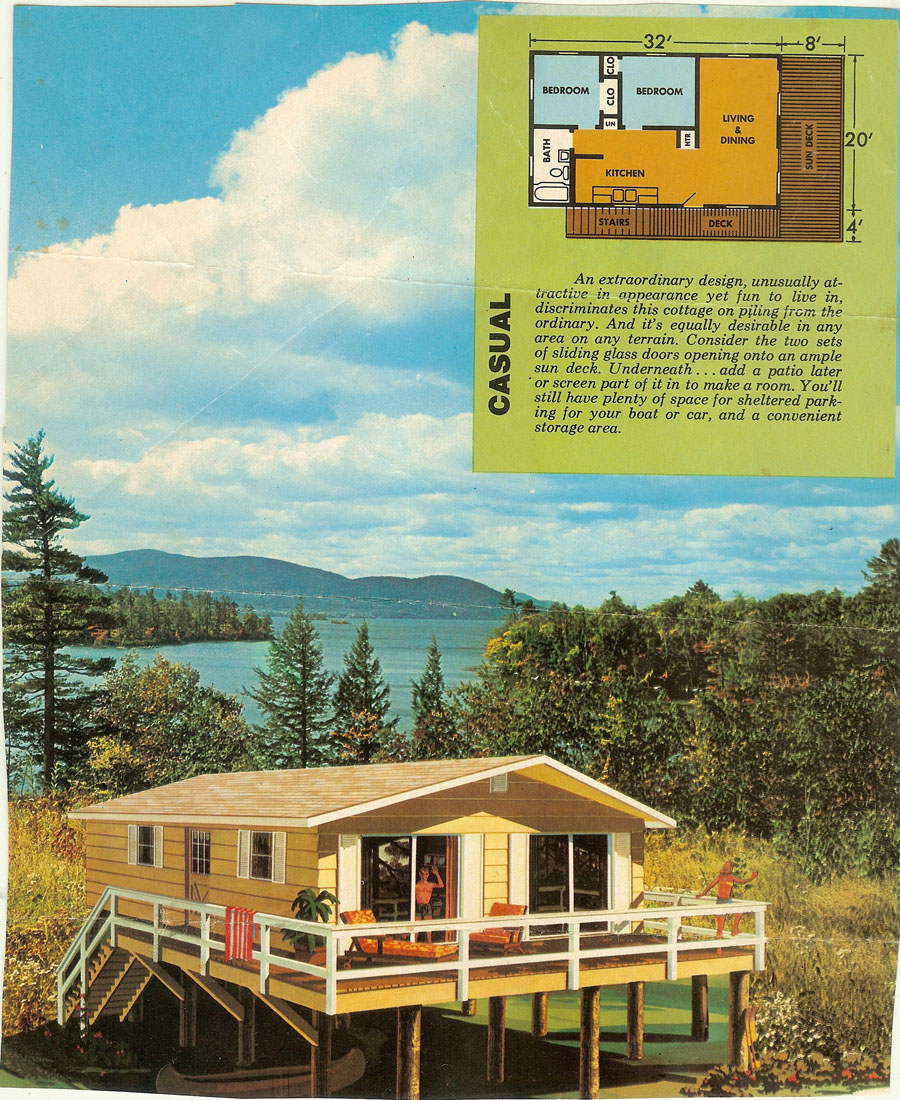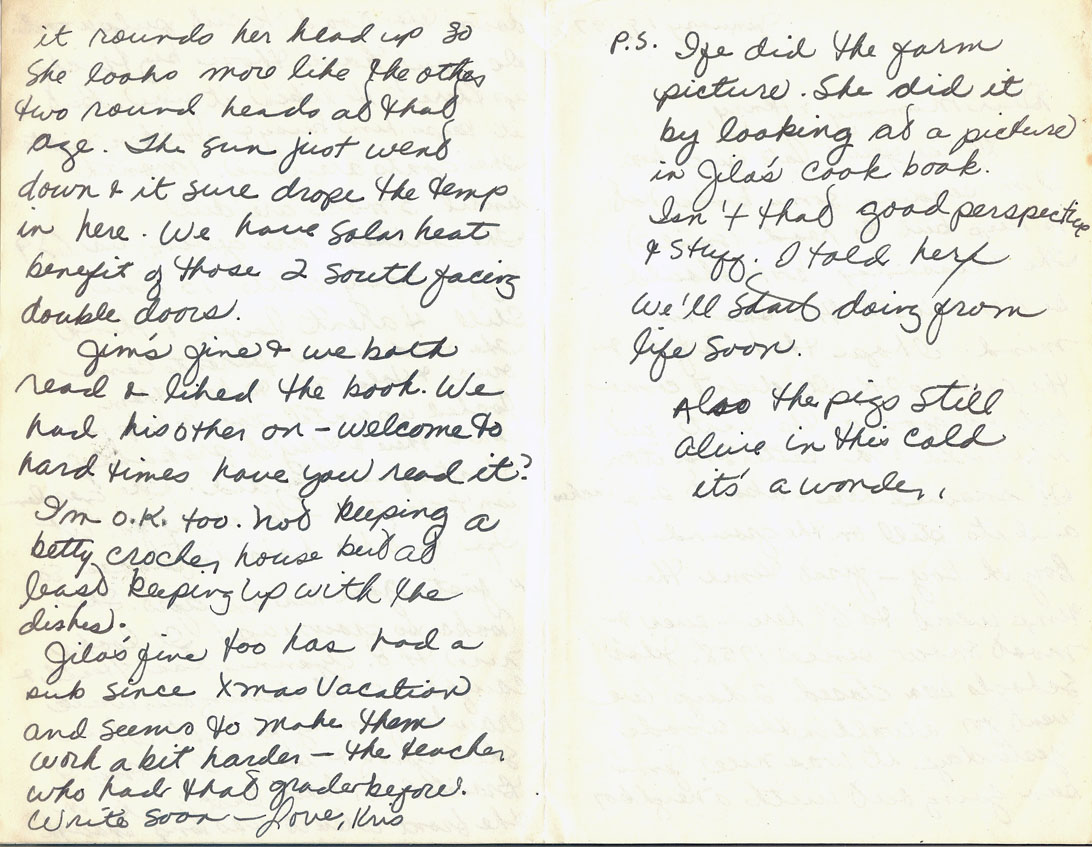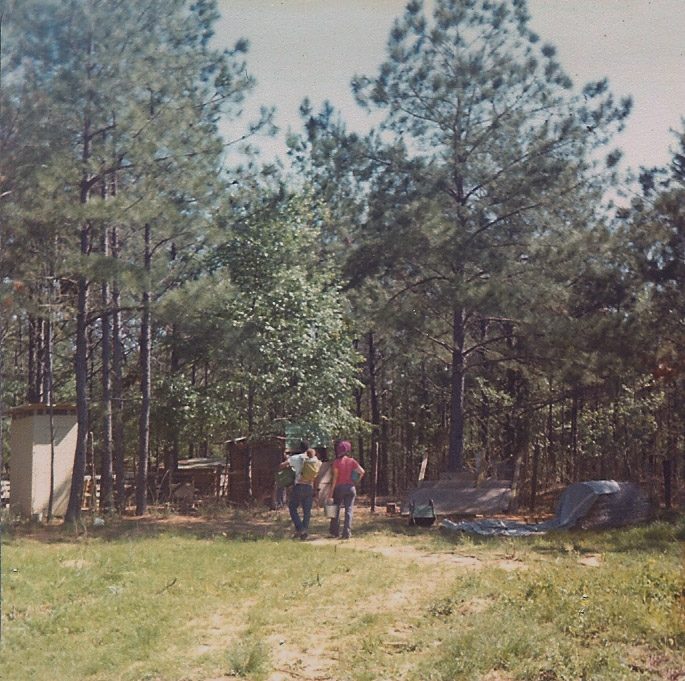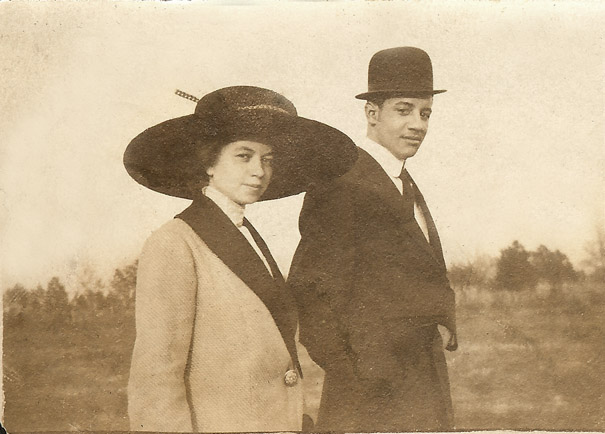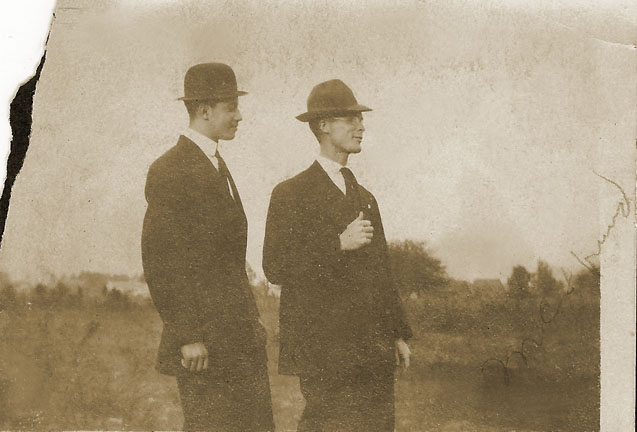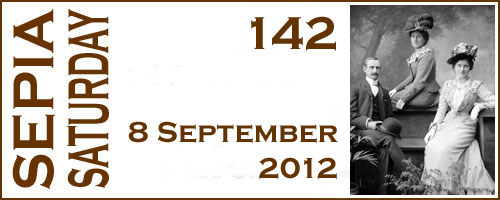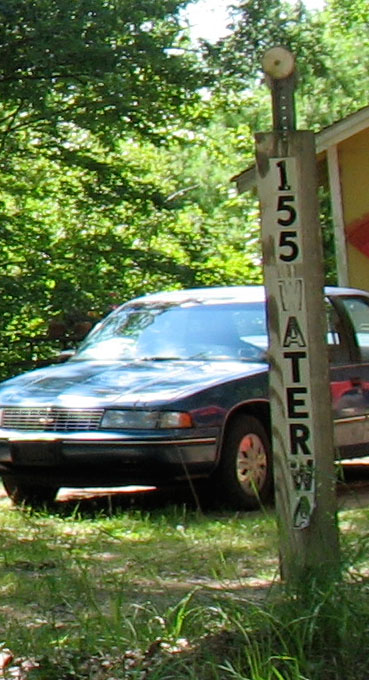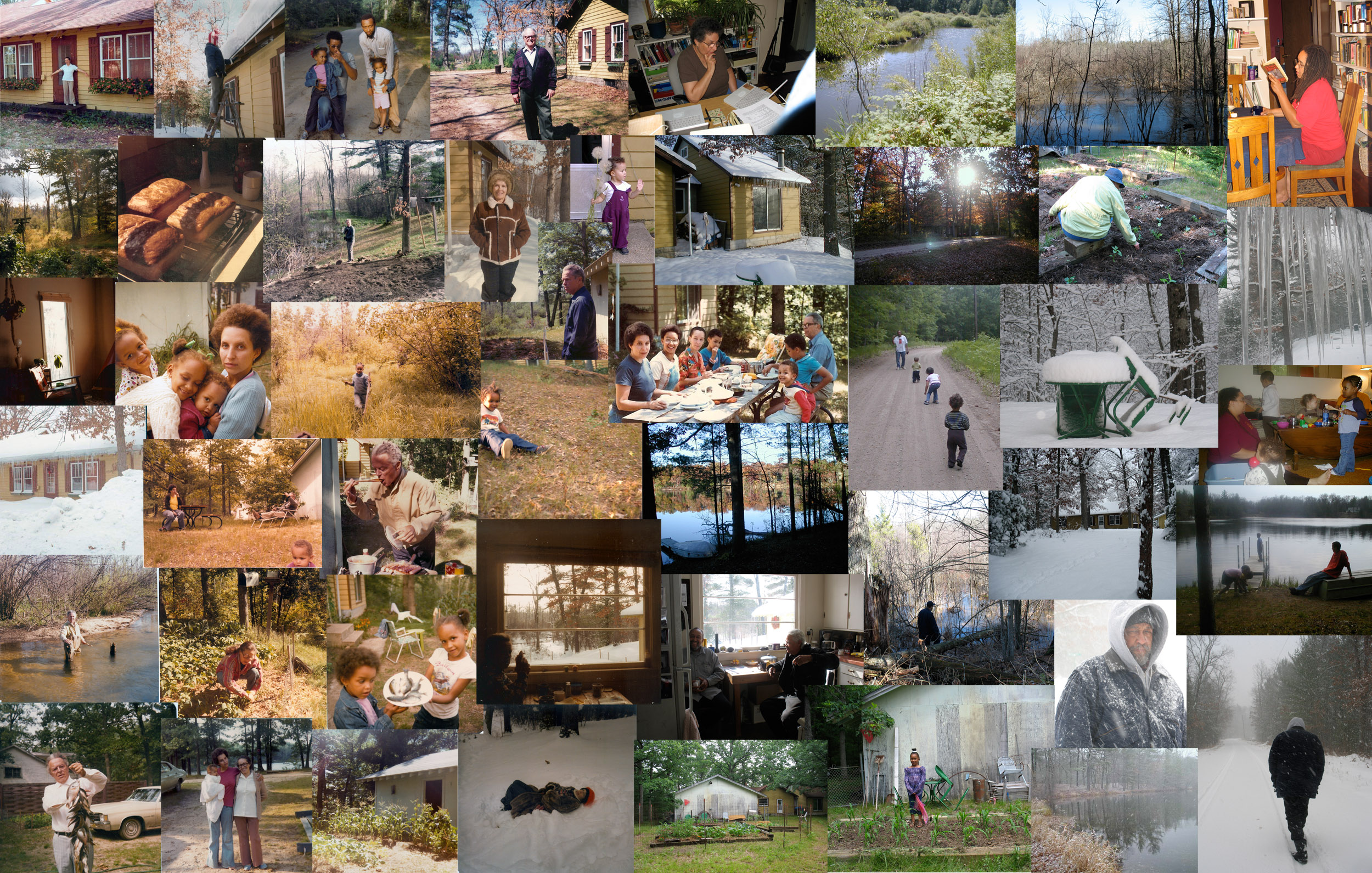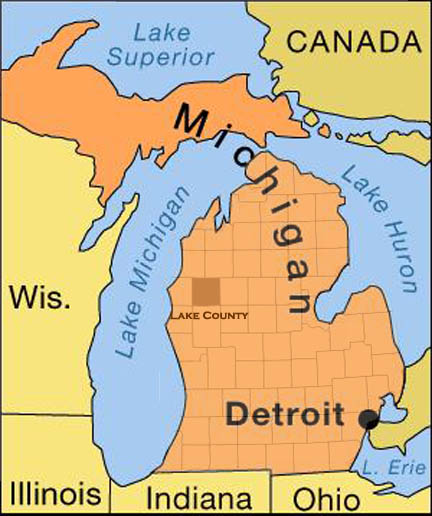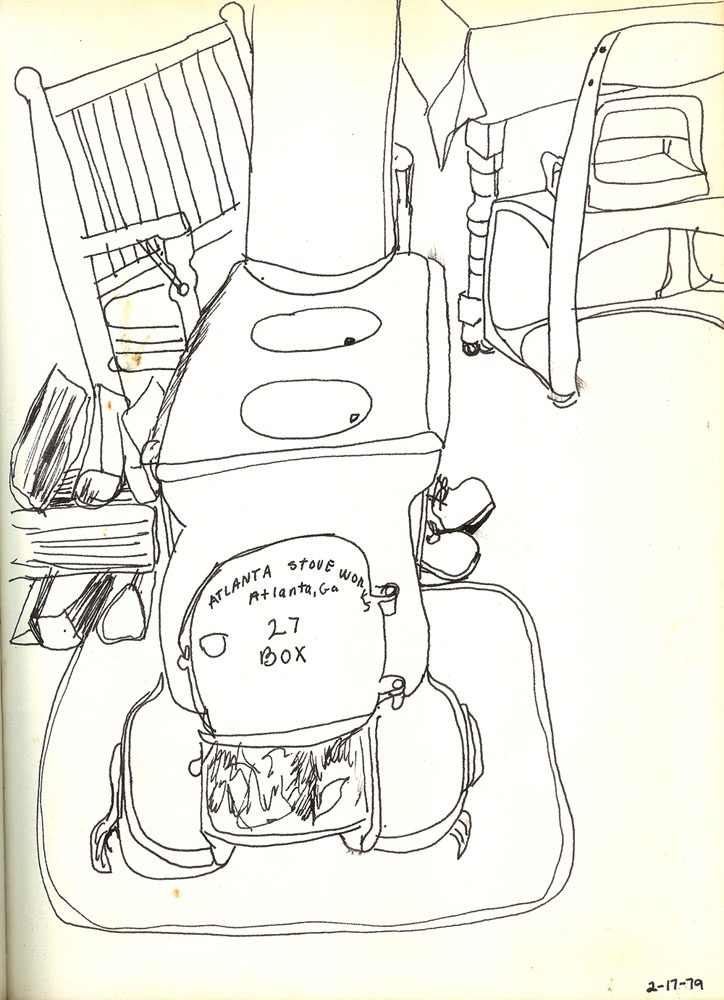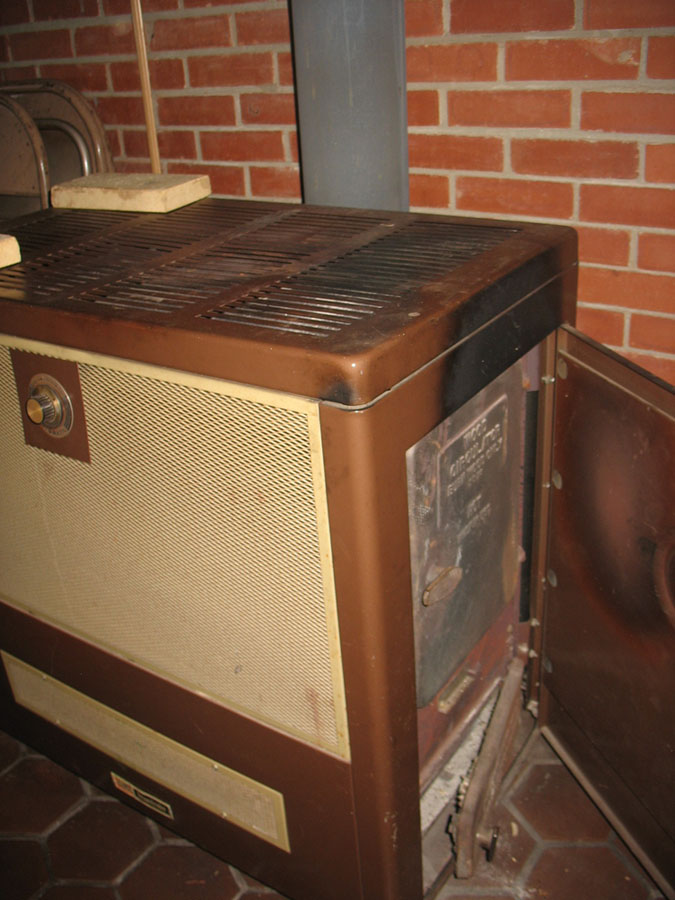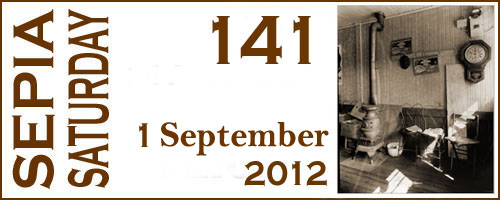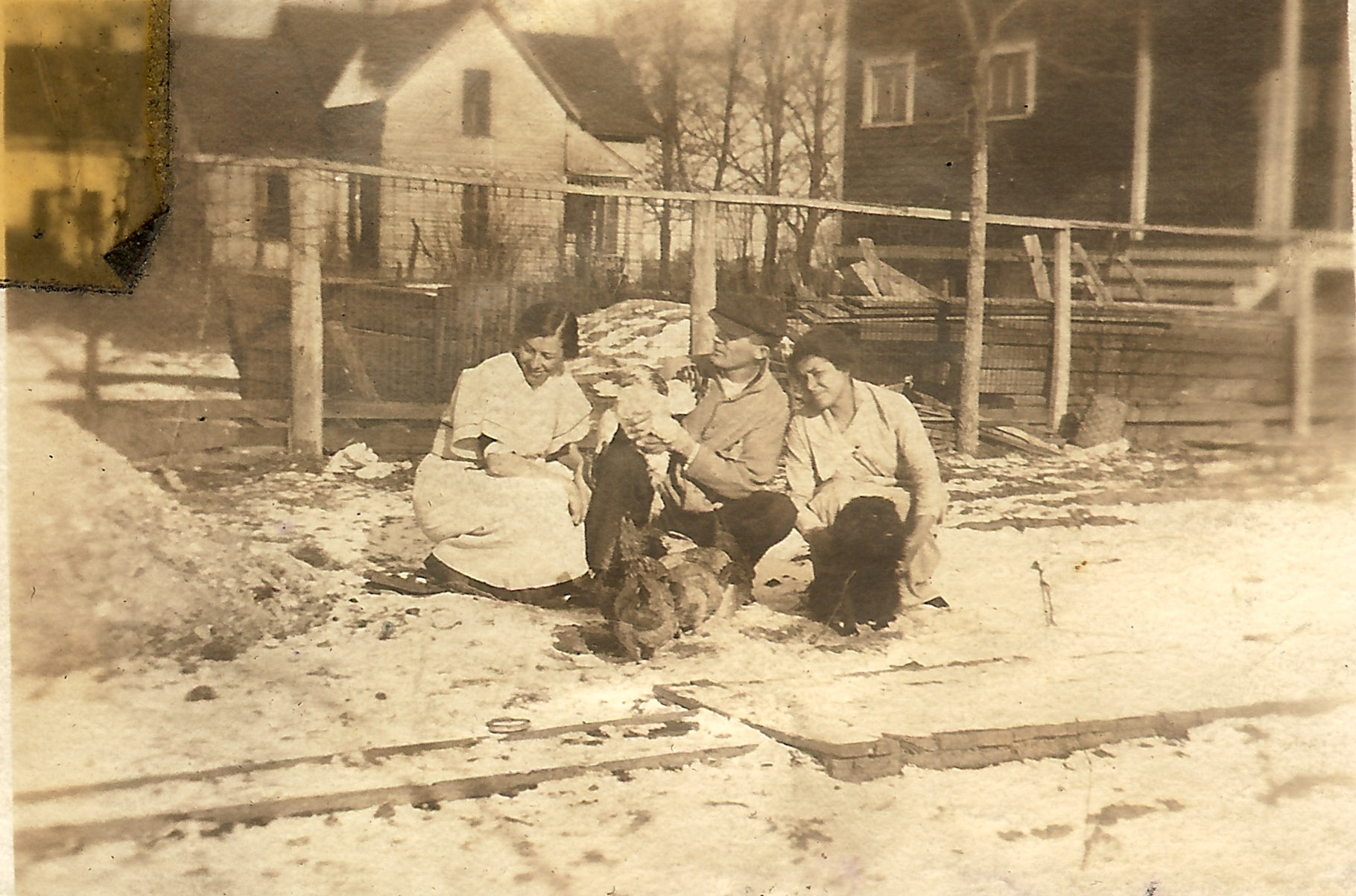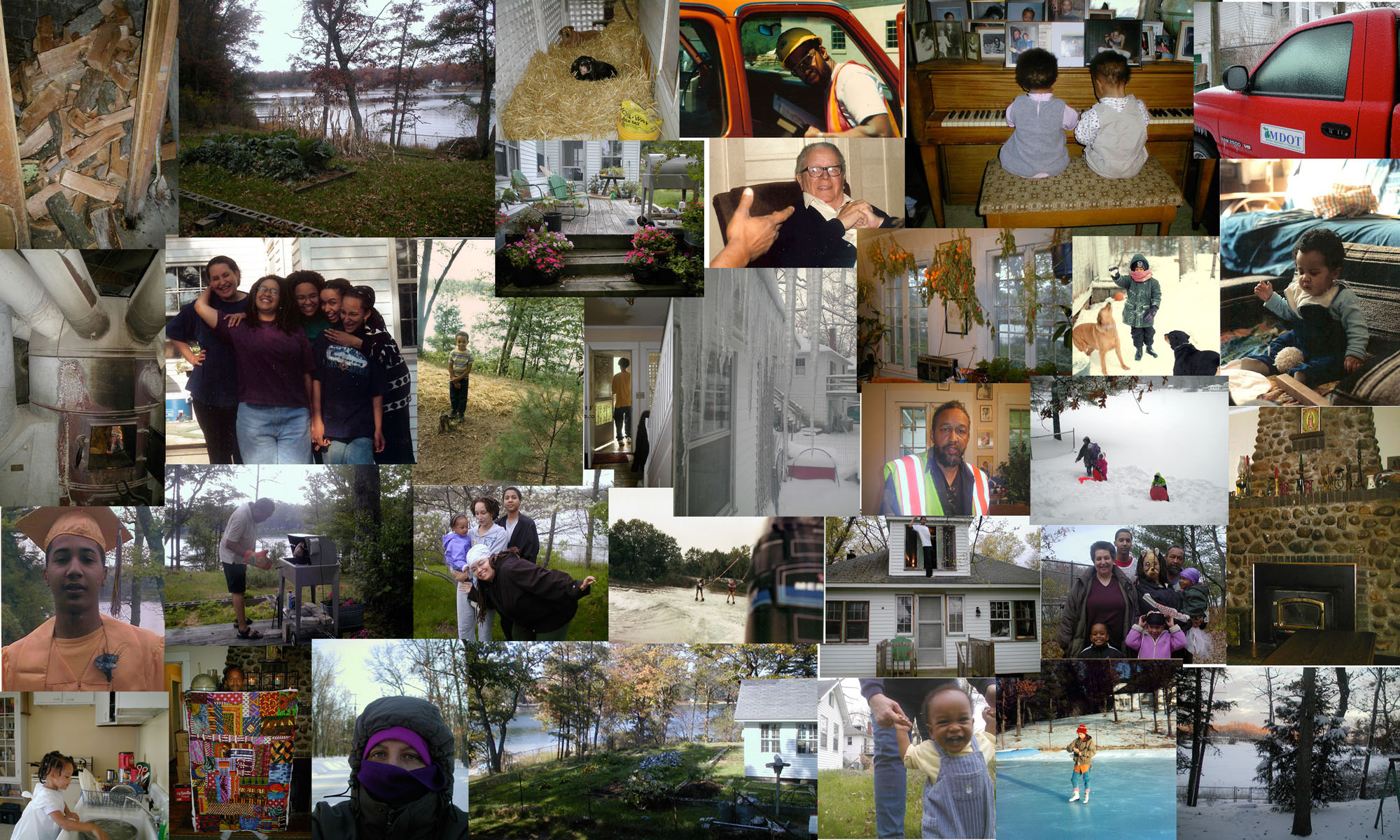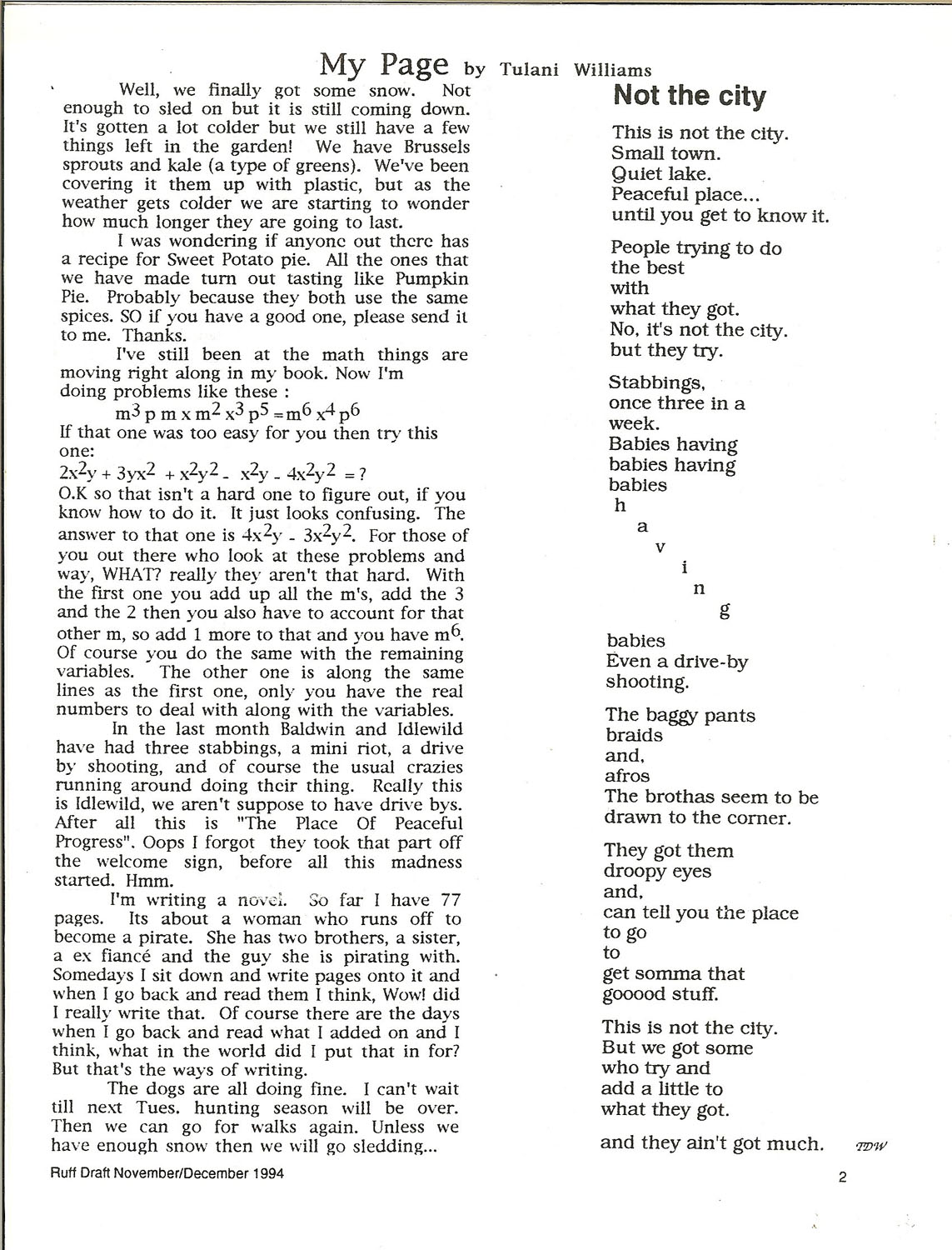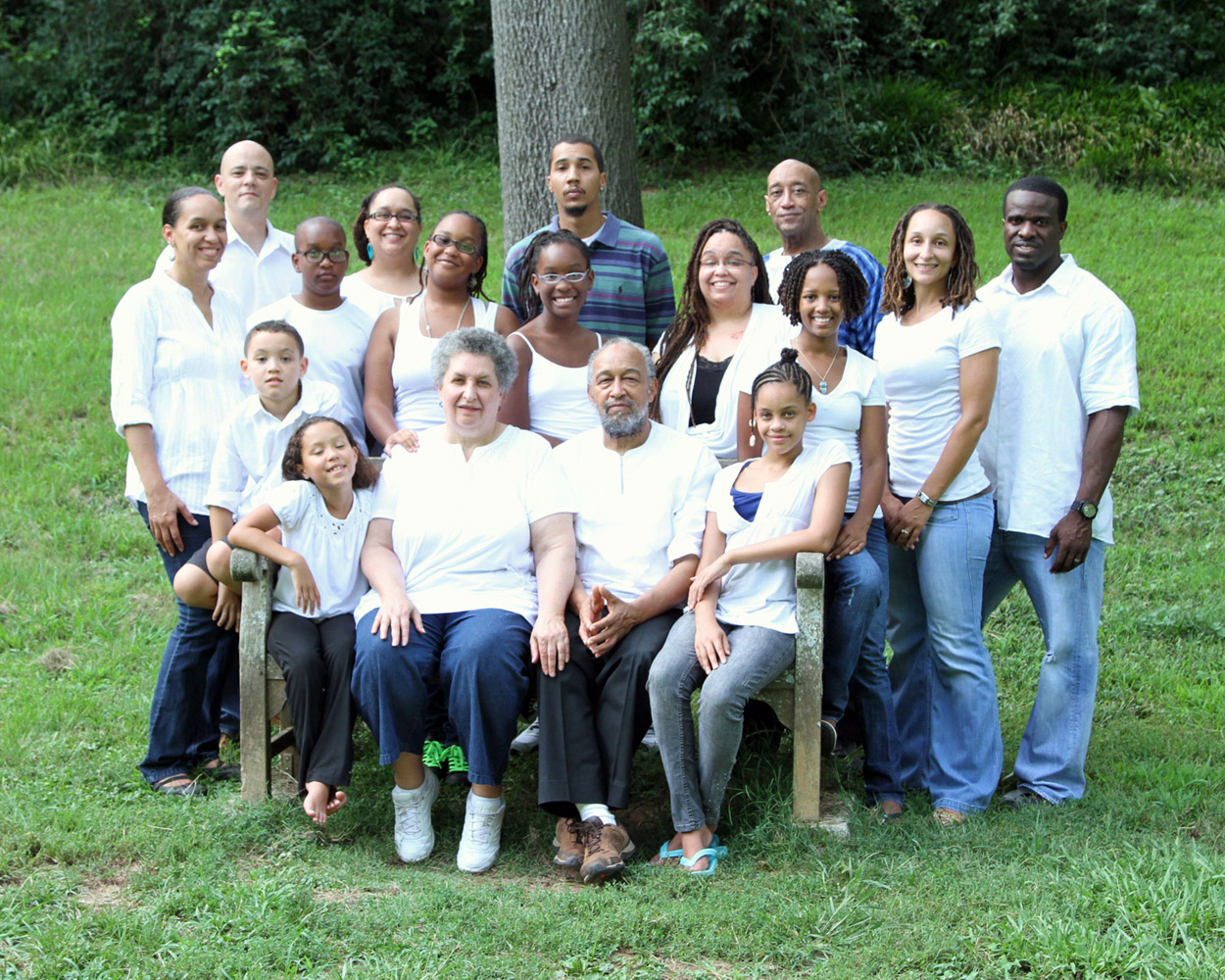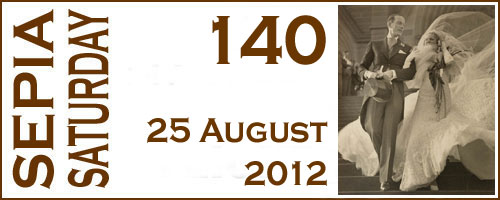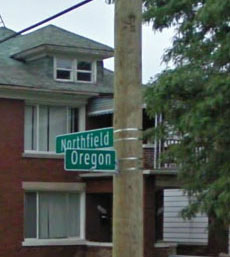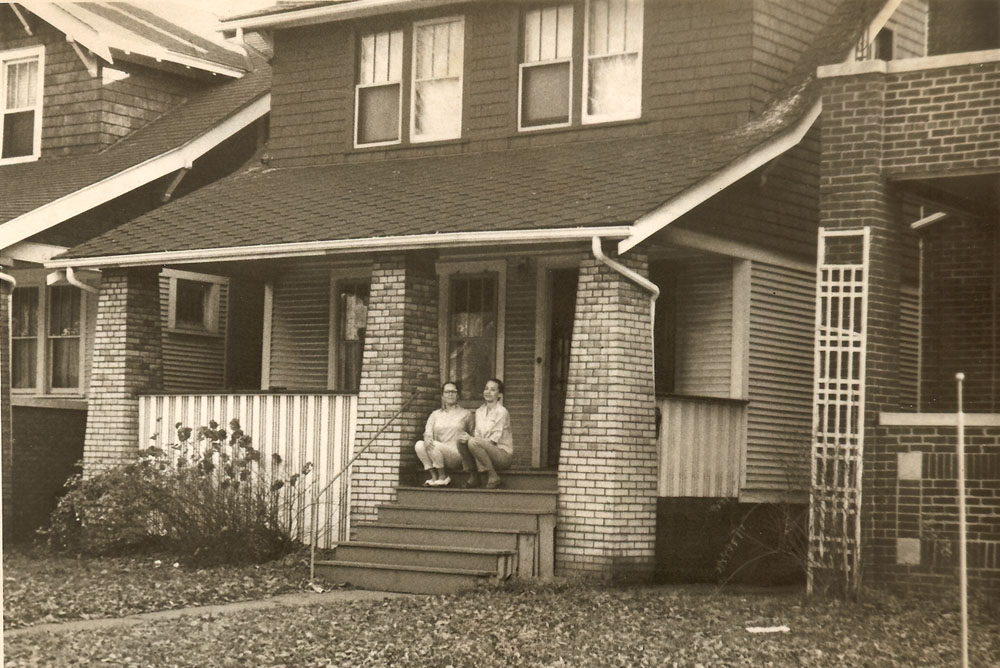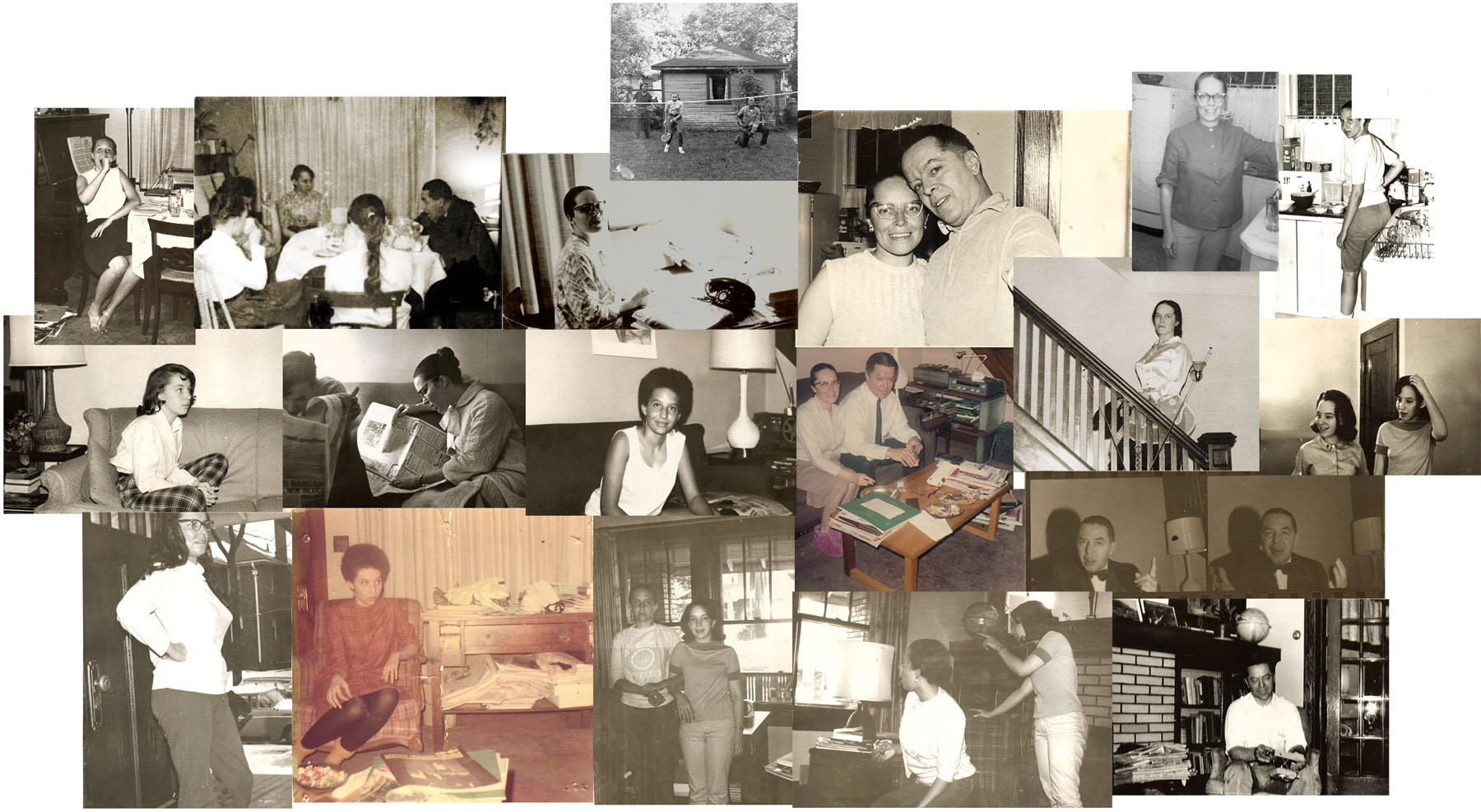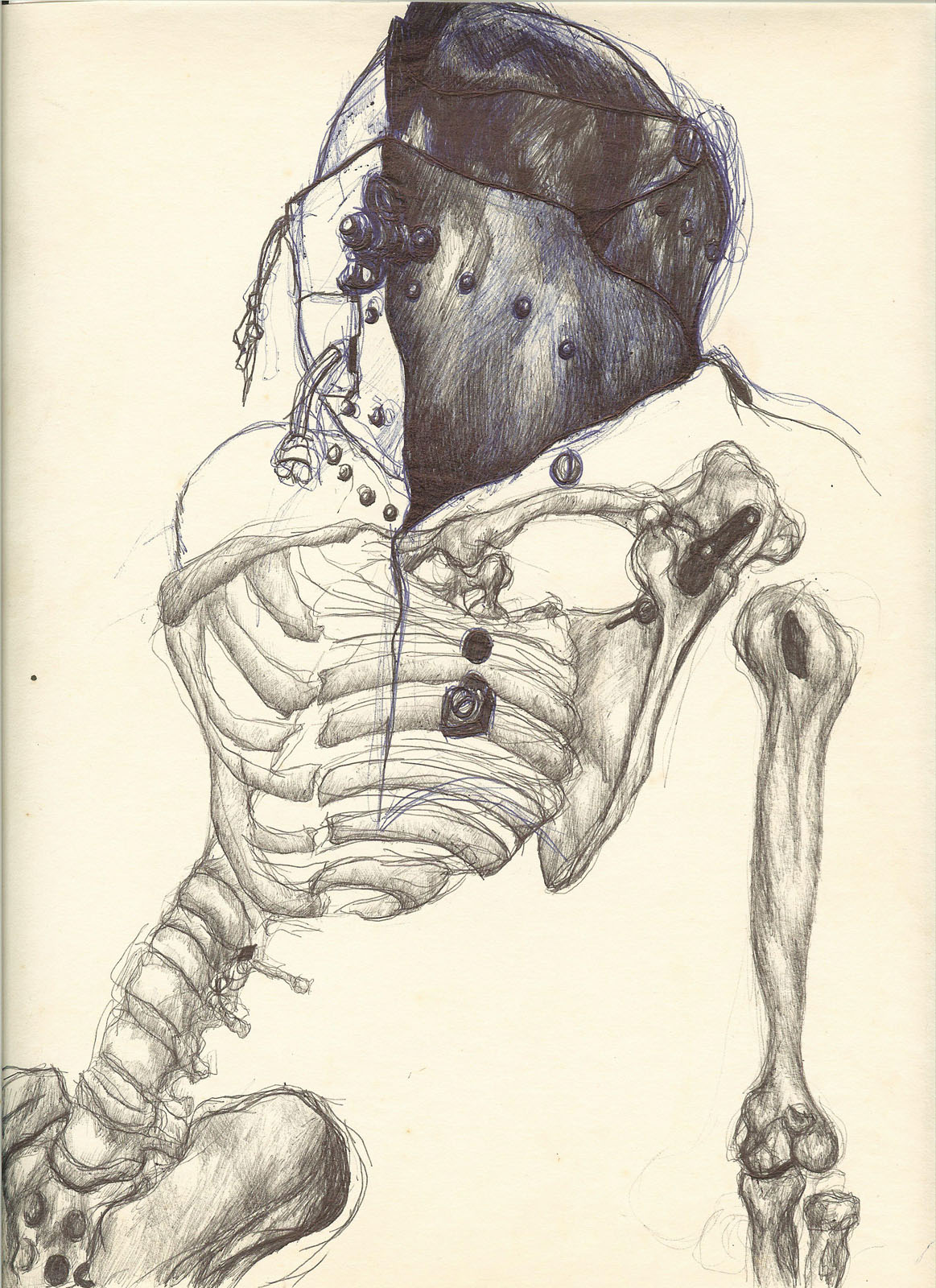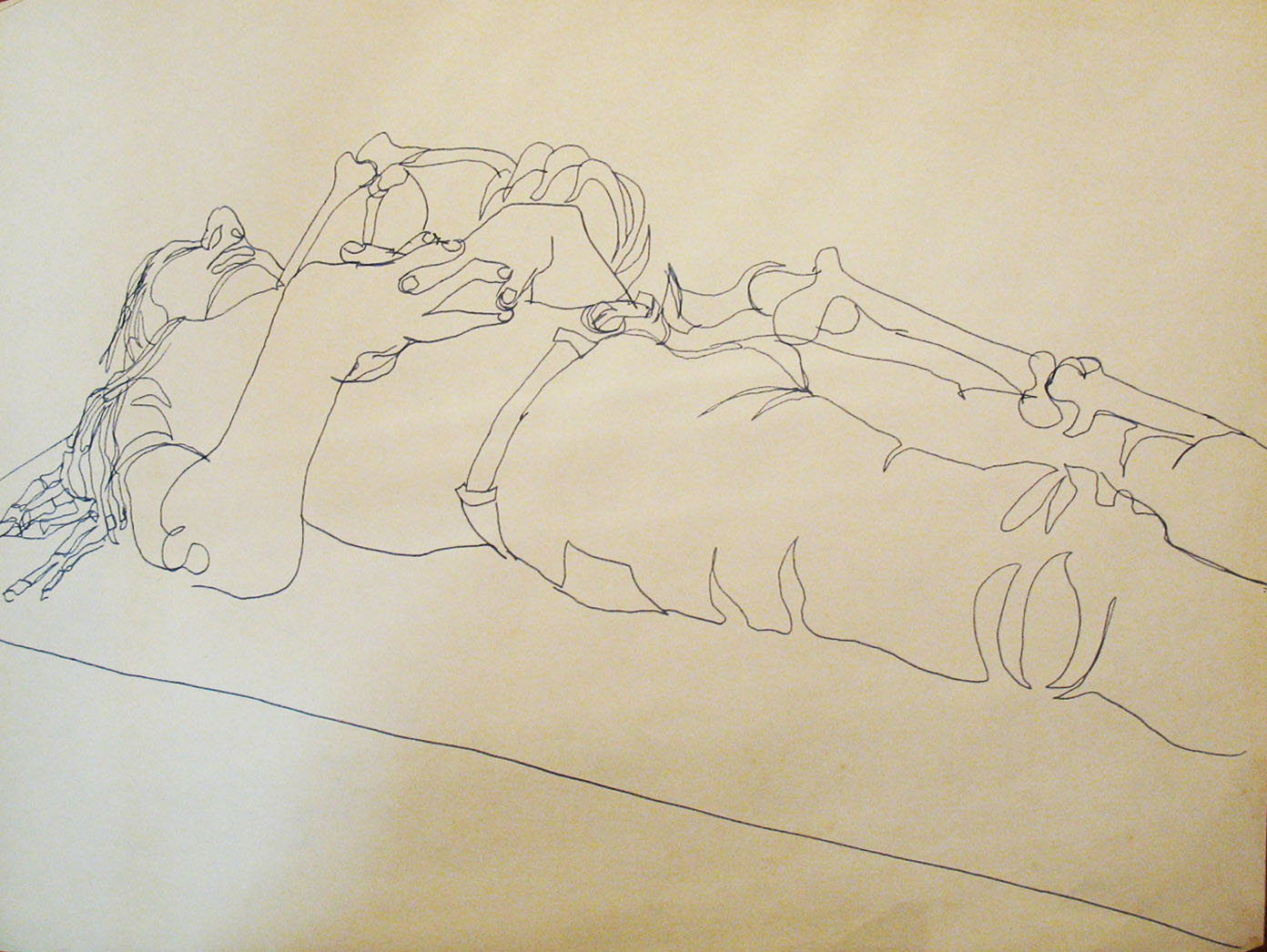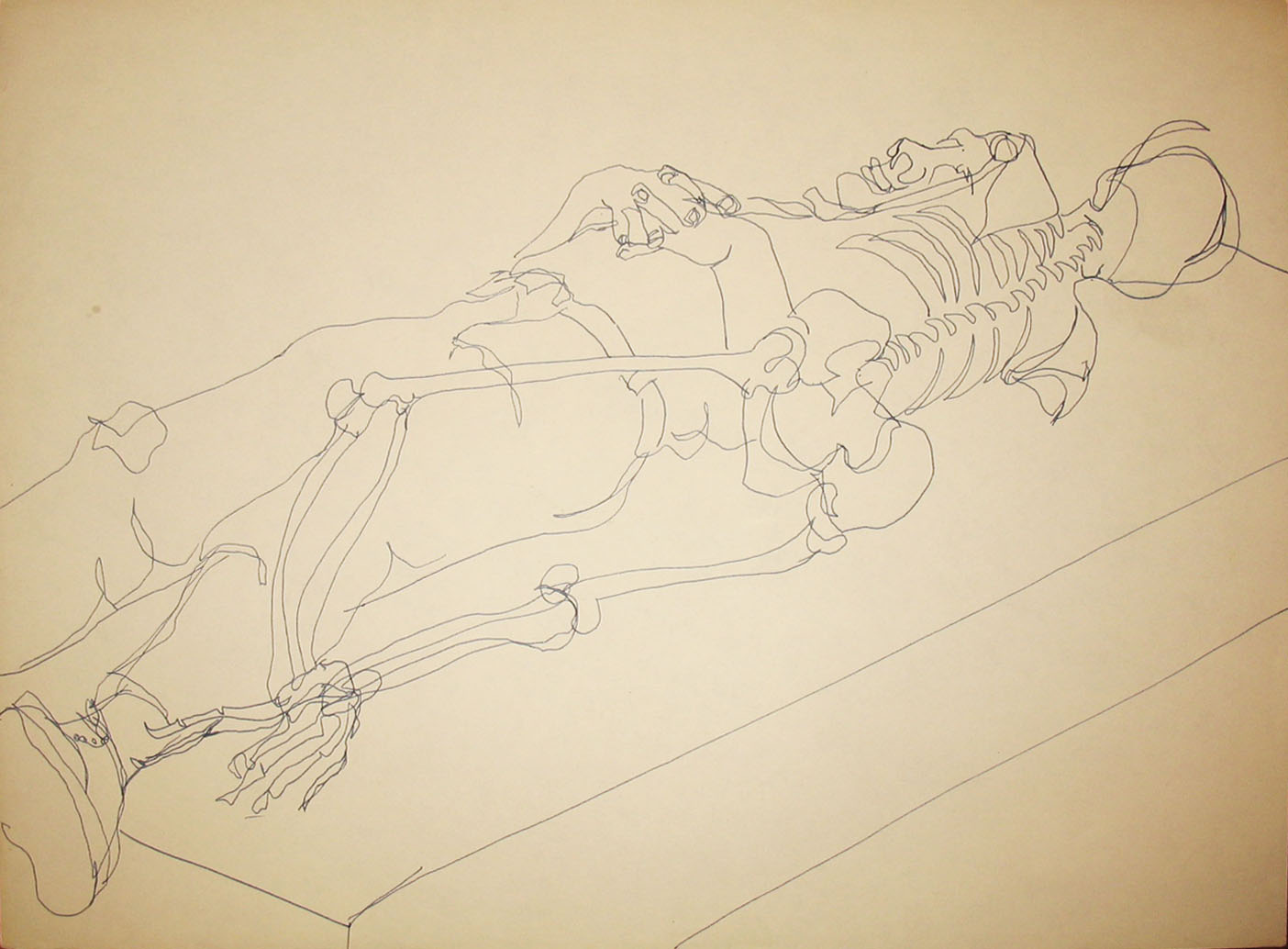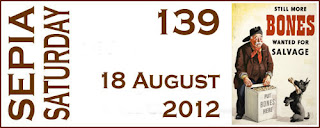This post continues a series using the Alphabet to go through streets that were significant in my life as part of the Family History Through the Alphabet Challenge. This week I remember living on St. John Road in Simpson County, Mississippi. However, since I already have an “S” street coming up and I needed an “R” street, I am using our mailing address, Route 1, Box 173 1/2, Braxton, MS. I don’t have a photo of our mailbox so I am using a return address from a letter I wrote back then.
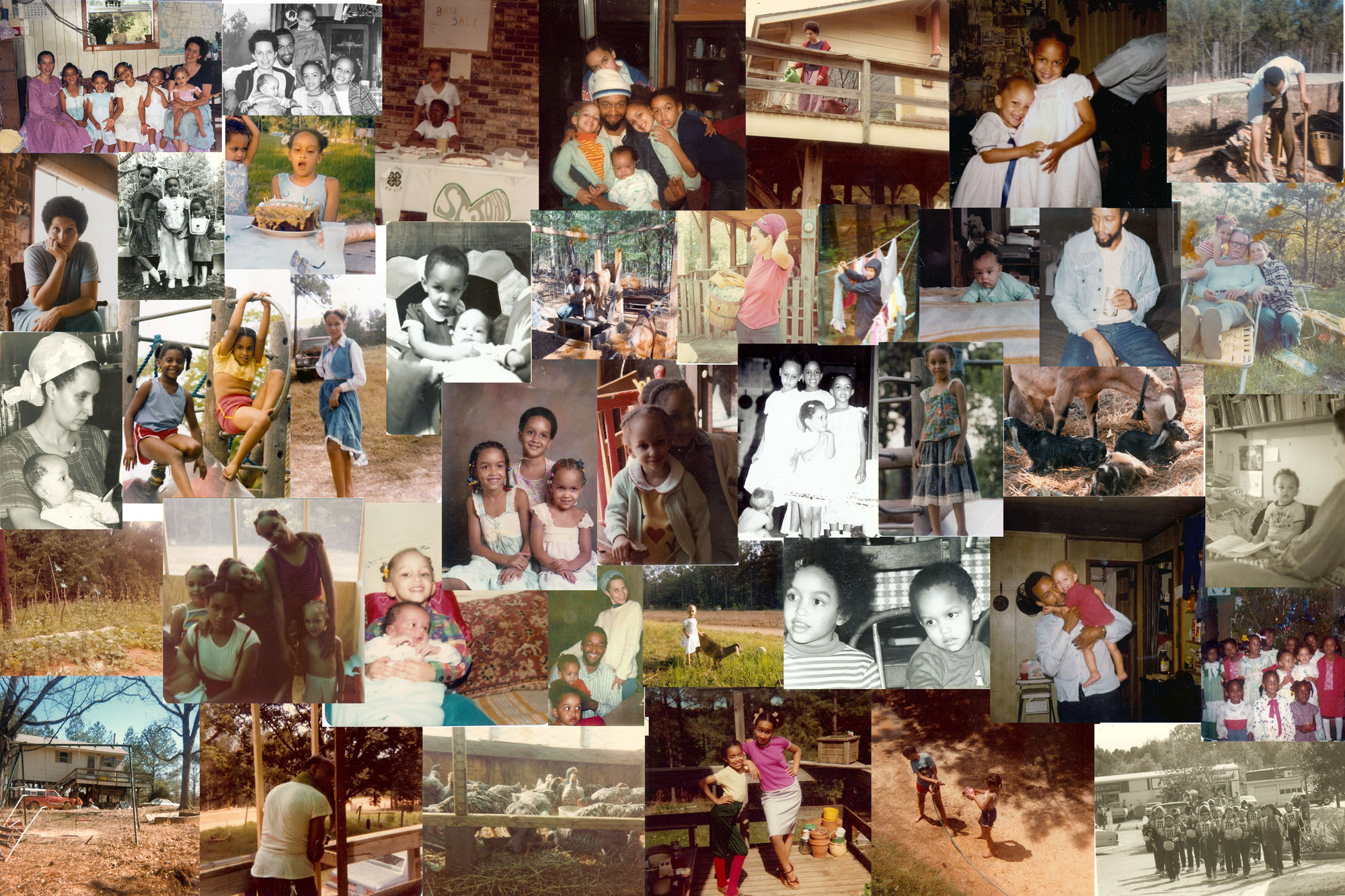
We moved to Simpson County, Mississippi in the fall of 1975. I was pregnant with our third daughter who was born April 12, 1976 at the home of our midwife. We had never lived in the real country before this move. Mt. Pleasant, South Carolina, outside of Charleston, was the closest we had been. My husband was working as an organizer with the Emergency Land Fund (E.L.F.), a group to help black farmers save their land, which was being lost at an alarming rate. We first lived at Rt. 1 Box 38 where the Emergency Land Fund had a model farm. Maybe I should say we helped setting up a model farm, complete with rabbits in the pen and tomatoes in Green houses and our own milk goats and chickens. When the Emergency Land Fund wanted to move us to the Mississippi Delta to run a soy bean farm, we opted to stay in Simpson County and Jim quit working for E.L.F. We had to move from the farm and so bought our first house and 5 acres several miles away. The house was a Jim Walters House that had been built by former volunteers to the Voice of Calvary Church in Mendenhall. You can buy the house in various stages of completion and the more you finish yourself, the cheaper the cost. It was from the plans in this picture. Unfortunately there was not a big lake in the yard and there was no danger of flooding. We were much more likely to have a tornado come through and that caused me many anxious nights as storms rolled through and we were 10 feet off the ground. There was indoor water for the bath and the kitchen sink but there was no indoor toilet. There was an outhouse outback. There was electricity and my husband, Jim, hooked up the washing machine. It wasn’t too hard to run pipes since they were all exposed under the house. That caused problems when we forgot to drip the water when temperatures dropped. Eventually we did get an inside toilet but it was several years coming. Three of my six children were born in Mississippi.
A letter I wrote home from Mississippi not too long after we moved in.
January 19, 1977
Dear Mommy and Henry,
Here’s your late gift box. I’m sending some books – not to keep but to read (smile). The Tatasaday book should be read with the Iks in mind. I hope the hats fit and the cake is o.k. It didn’t come out as good as the last but i figured i’d better send it on.
It snowed here – about 2 1/2 inches and it’s still on the ground! Boy oh boy – first time the temp went to 6 degrees here, ever. And the most snow since 1958. Jilo’s school has been closed 2 days. We went for a walk in the woods yesterday. It was nice. Jim’s been going out with a neighbor down the road to cut pulpwood. Do you have those big trucks up there? He likes it fine. But it keeps him busy and working nights.
The goats are fine. 1 month until 3 more are due. The chickens are giving us 6 to 9 eggs daily with 13 hens. Still 4 aren’t laying i think. The midwife’s parents came over and told me to keep them locked up until noon and keep food and water there and they’d probably start up – and they did. The garden isn’t started – luckily for it.
Ife cut her hair in places so i just gave her an afro. She looks so grown up! It looks nice though. Ayanna has 4 teeth and crawls funny but gets where she’s going and is still happy. I braided her hair last week in the front where it was long enough. it rounds her head up so she looks more like the other two round heads at that age. The sun just went down and it sure droped the temp in here. We have solar heat benefit of those 2 south facing double doors.
Jim’s fine and we both read and liked the book. We had his other one – Welcome to Hard Times – have you read it? I’m ok too. Not keeping a Betty Crocker house but at least keeping up with the dishes. Jilo’s fine too, has had a sub(stitute teacher) since Christmas vacation, She seems to make them work a bit harder – the teacher who had that grade before.
Write soon – Love Kris
P.S. Ife did the farm picture. She did it by looking as at a picture in Jilo’s cook book. Isn’t that good perspective and stuff. I told her we’ll start doing from life soon.
Also, the pig is still alive in this cold. it’s a wonder.
For more about living in Mississippi, including goats, killing chickens, heating with a wood stove, midwives, friends and work shoes read these posts.

